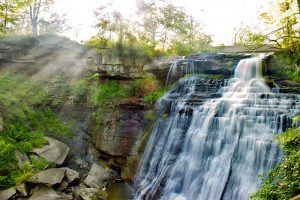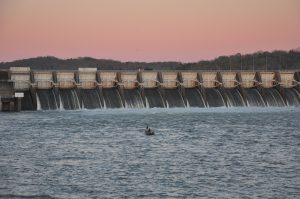A fort (short for fortification) is a building or wall designed to defend a territory, town, or people during a time of war or unrest. They can also be used as a way to claim territory and establish rule. Forts can be built for permanent use or for temporary military function and have even been used as a residence for monarchs and other nobles.
Due to advancements and changes in warfare, modern fortifications are not so common, but back in the day, it was nearly impossible to find a town that was not fortified in some way. There are numerous types of forts around the world, and we’ve laid out 30 of the most common types below.
Table of Contents
1. Defensive Wall
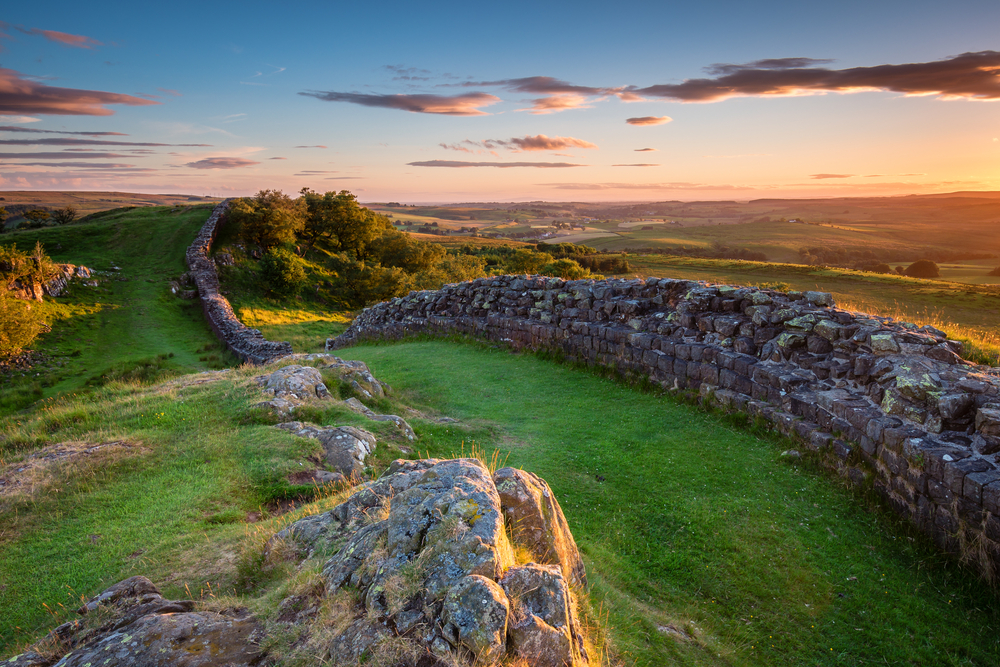
Also referred to as city walls, defensive walls are one of the oldest types of fortifications, with the earliest example of this type dating back to the 6th millennium BC. While many ancient city walls have been destroyed either by enemies or by erosion over time, some remnants of the oldest defensive walls still remain. Almost all of the existing defensive walls were built out of stone masonry, though there are some with timber components as well.
Wall fortifications were and are still being built in the modern era, though the purposes of constructing these walls have changed. Most of the fortified walls that are still in use today act as a way of preventing the passage of humans and goods into certain areas or to enable tolls or taxes on those passing through. Some of the best examples of this type of defensive wall include the border wall between the southern United States and Mexico and the Israeli West Bank barrier.
2. Chinese City Wall
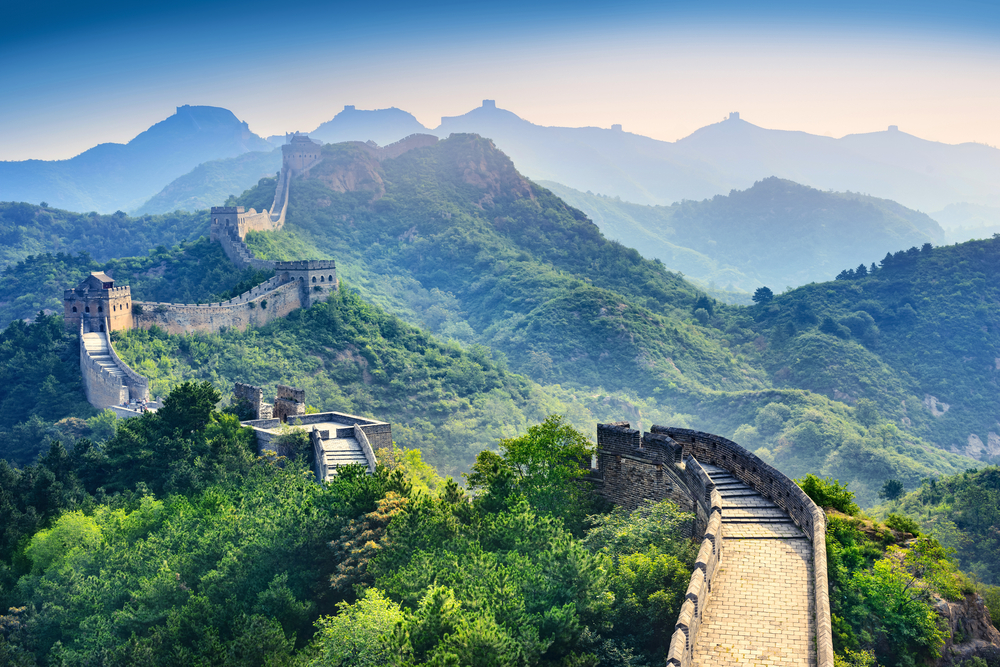
Chinese city walls differ from other defensive walls in one main way – the length of ancient Chinese city walls extended far beyond city limits. The most famous example of this type of fort is without a doubt the Great Wall of China, but there were many other massive walls built throughout the country’s long history.
The invention of the city wall is actually attributed to the Chinese, and by the height of the Zhou Dynasty (1046 BC–256 BC), most settlements possessed a wall. The walls were improved upon over the years, and many of these massive structures included gates, barbicans, towers, and moats.
Like so many other ancient structures, many of these impressive walls no longer exist today, though you can see remnants of the Nanjing city wall, a barbican of the Linhai city wall, and parts of the Beijing city wall, among others. The most well preserved is the Great Wall of China, whose main line stretches over 3,000 km.
3. Medieval Fortifications
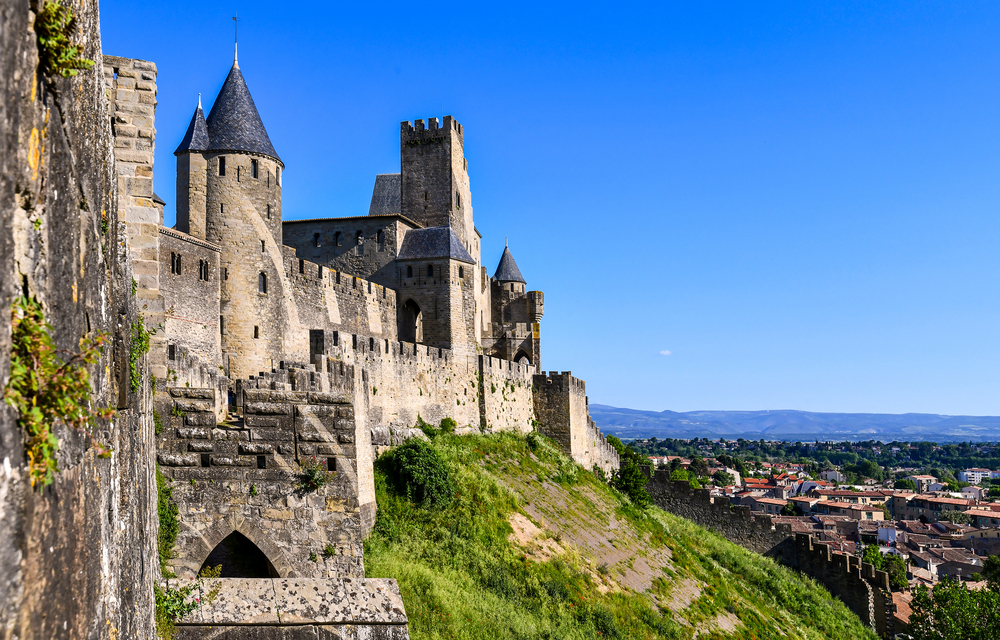
City walls were quite common throughout the Middle Ages as well, but other aspects were also used in medieval fortifications. Some of these additions include archer towers, motte-and-baileys, gates, killing fields, moats, and stairs, amongst others.
Medieval fortifications did not go up overnight, and the construction of these complex structures often took decades to complete. It was also important to place the fort somewhere where the natural surroundings could aid in the defense, like a heavily forested expanse, atop a high hill, or next to a mountain. It was also common for medieval fortifications to be perched on the water, so as to facilitate trade.
Although countless medieval fortifications have been destroyed throughout history, there are many that remain almost completely intact. Some of the most famous medieval fortifications include the Walls of Dubrovnik, the Beaumaris Castle in Wales, and the Baba Vida in Bulgaria.
4. Blockhouse
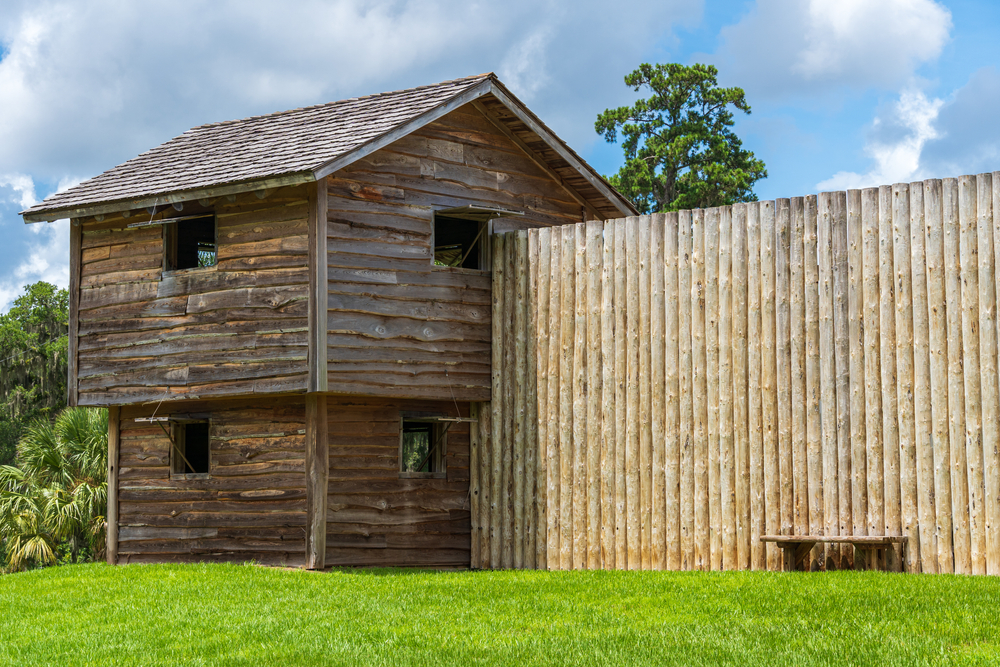
One of the smaller types of fortifications is a blockhouse, which usually consists of one or more rooms with a series of loopholes so defenders can fire at enemies from all directions. Blockhouses can be included in larger fortifications, though they are usually stand-alone buildings used as a strong point against enemies.
The earliest blockhouses were used as a way to protect a small area for a short period of time. They were often built in pairs, and while the shape of this type of fortification varied heavily, most were made from either masonry or reinforced timber.
Blockhouses were extremely common during the second world war, and many European countries built these along their shores in anticipation of a German invasion. England alone built nearly 30,000 “pillboxes” (hexagonal-shaped blockhouses) during this period, and over 6,000 of these small fortifications still remain to this day.
5. Bunker
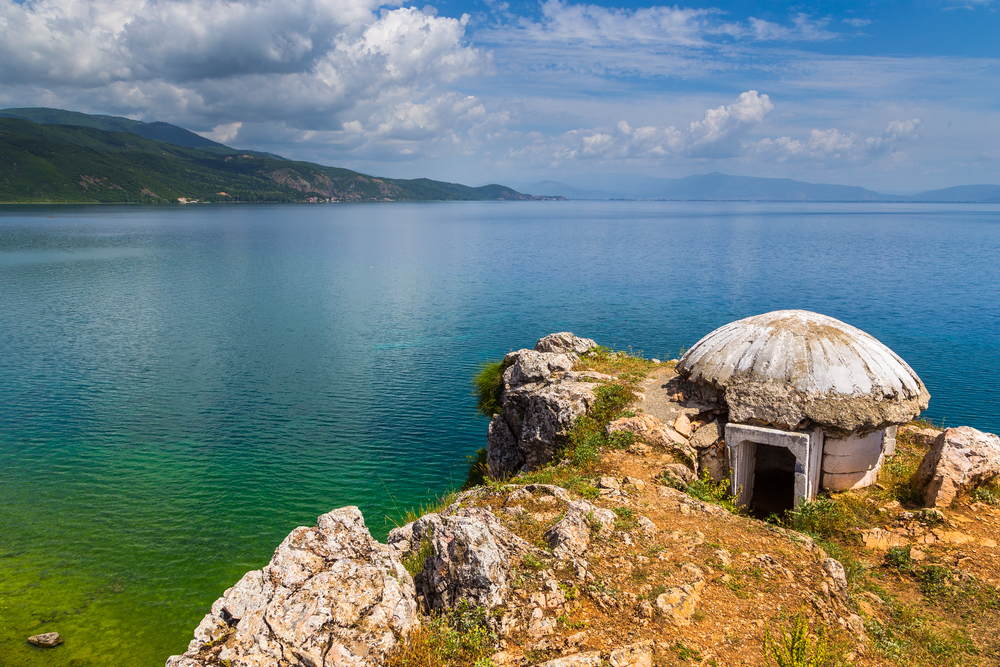
Similar to the blockhouse, a bunker is a small military fortification used to protect people and valuable goods from enemy attacks. Although there are some built above ground, bunkers are usually built partially or completely underground to camouflage them from enemies.
Historically, there have been two main types of bunkers: trench and artillery. Trench bunkers are built partly into the ground and are part of a larger trench system. This type of bunker is used mainly to protect soldiers from aerial attacks and weather, and some have holes for discharging weapons against enemies.
Artillery bunkers are meant to protect artillery, weapons, and the crews that served the weapons. These structures were most common along the coasts, where special artillery was most commonly needed.
6. Castle

Historically, fortifications were also used as residences for nobles and royals, and this is one of the most lavish types of forts in existence. Castles are not to be confused with other royal residences like palaces and estates, as these types of structures are usually not fortified. While castles were used as homes for nobility, they were also used to protect large areas of land and the people that inhabited them.
Castles were mostly built in Europe during the Middle Ages (though they can be found in many different areas around the world) and were used as a base for both offensive and defensive military operations. Some castles were built with more grandeur than others, but some of the most common features of even the most basic castles include mottes, gatehouses, baileys, battlements, loopholes, and great halls.
7. Palace Fort
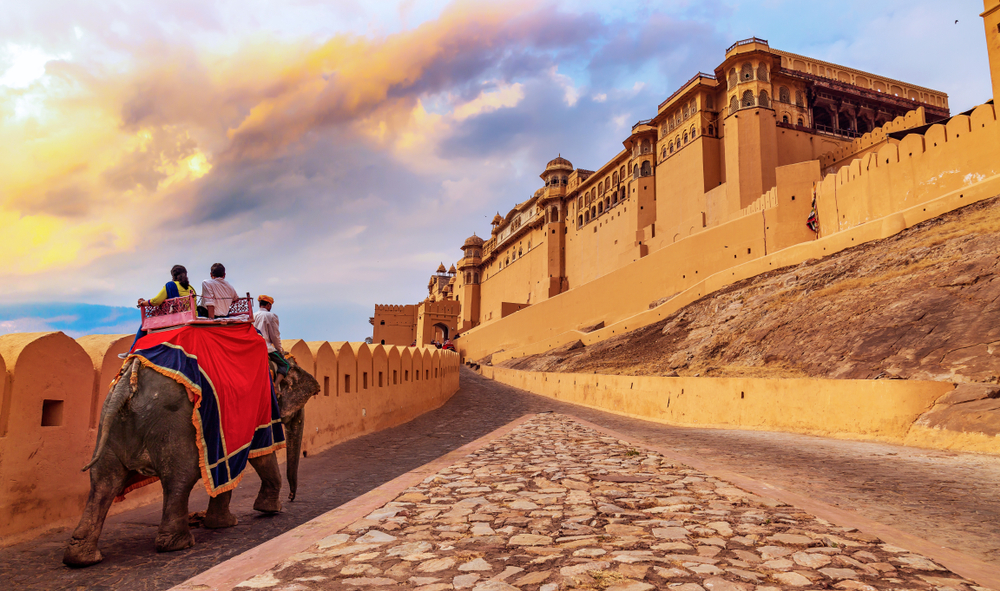
Some palaces were also fortified, though these structures are much less common than castles. Palace forts are not so uncommon in India, however, and these ornate structures feature incredible architecture and overall grandeur that is often missing from castles.
It makes sense that you would want to fortify palace walls, as these buildings usually house some of the most valuable spoils of war. While both palaces and castles are used to house royalty and other nobles, palaces were often used to showcase the monarchy’s riches. It was not uncommon to find golden thrones, lavishly decorated rooms, gilded table settings, and large banquet halls.
Some of the most famous palace forts include Amer Palace and Raja Mahal, both of which are located in India.
8. Fortified Church

As we mentioned above, in the early Middle Ages it was quite common for cities and towns to have their own fortifications to protect themselves against enemies during times of war. But villagers could not afford to create walls and other defenses around their entire settlement, and for this reason, fortified churches and fortress churches came about.
Churches built during this time were often constructed with large outer walls, battlements, towers, and other military-style features to protect those who took refuge inside them. These types of fortifications were especially popular in southern France and the Transylvania region of Romania.
9. Compound
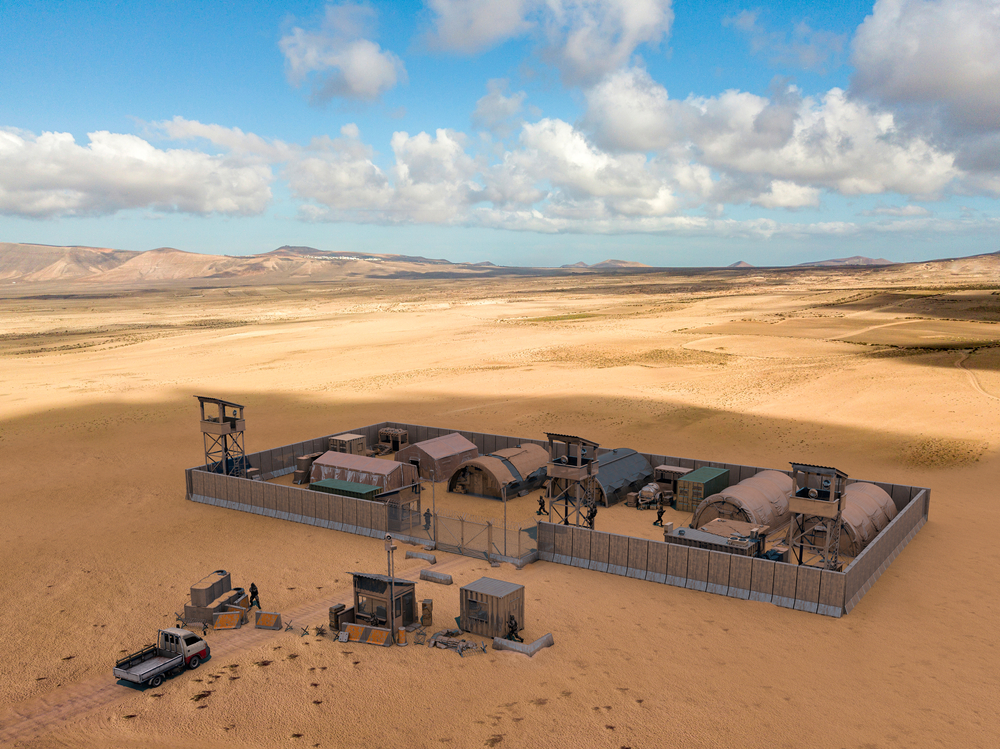
In the military sense, a compound is a fortified enclosure used to protect the people and property inside of it. These enclosures are usually made out of thick, impenetrable walls that often feature additional defensive mechanisms like barbed or electrified wire.
Compounds are most commonly found in war zones, though they can also act as military zones within a country’s own territory. Insurgent and terrorist groups have also been known to use compounds, as have non-military organizations like motorcycle clubs, cults, religious sects, and even residential neighborhoods.
10. Stockade
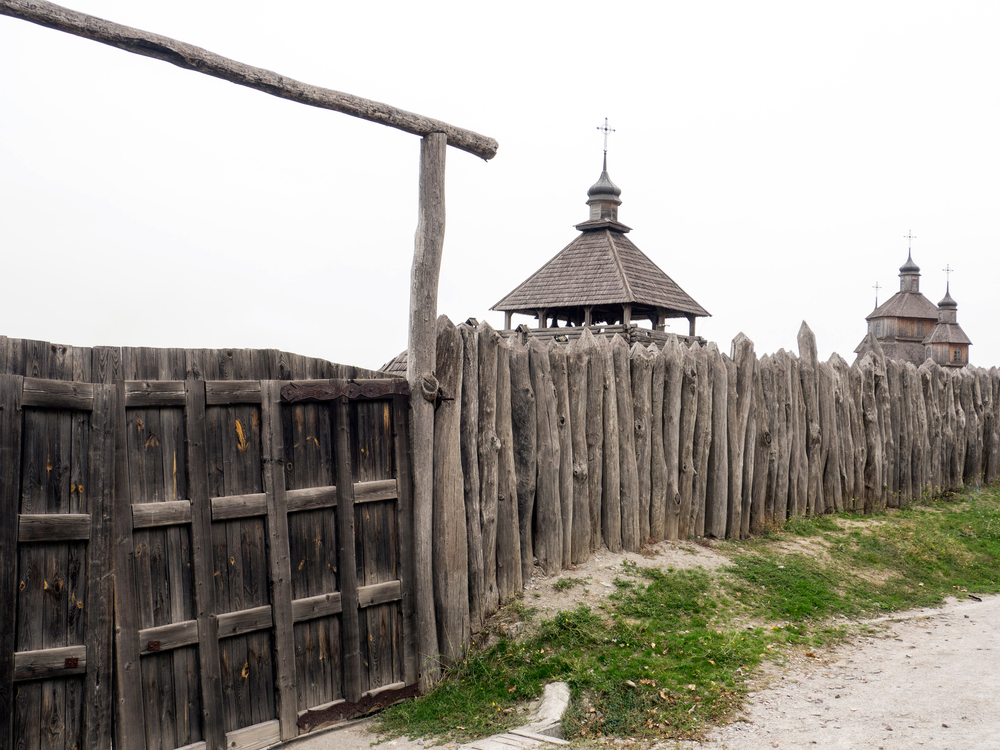
Stockades are similar to compounds, and these fortified structures were usually used to protect cities or other inhabited areas from enemy attacks. Stockades were made from vertical sharpened logs that were secured by digging a narrow trench along the perimeter of the area that they were meant to protect. Builders fortified these wooden walls by placing thick layers of mud and stone around the bottom, and they also used clay or mud in between the posts to protect against the wind.
Stockades were especially popular fortifications during the Ottoman empire, though they have also been used by various settlers throughout history. Stockades are not commonly used today, and if you do see them, it’s usually more for decoration than protection.
11. Diaolou
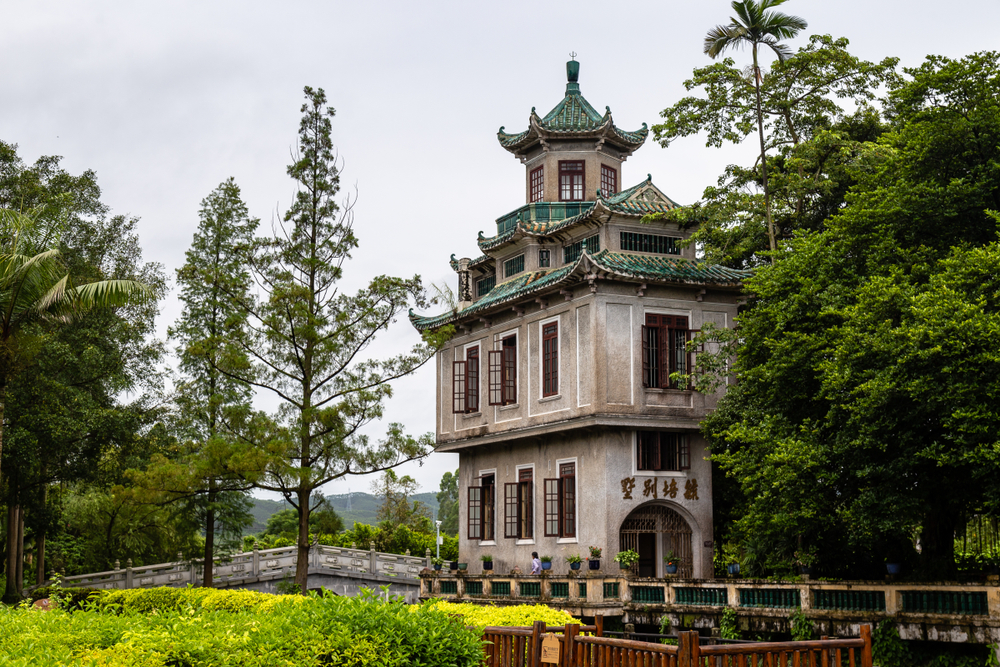
A diaolou is a multi-story watchtower, and they were once used in rural villages across the Kaiping region of China. The earliest of these tower fortifications dates back to the Ming dynasty when residents of the countryside had to defend themselves against frequent bandit attacks. Diaolous reached their peak numbers during the 1920s and 30s during the Warlord Era.
While diaolous are no longer used, they act as reminders of the perseverance of the peasants of Kaiping. There are still about 1,800 of these watchtowers standing, and in 2007, the Kaiping Diaolou and Villages were named a UNESCO World Heritage Site.
12. Flak Tower
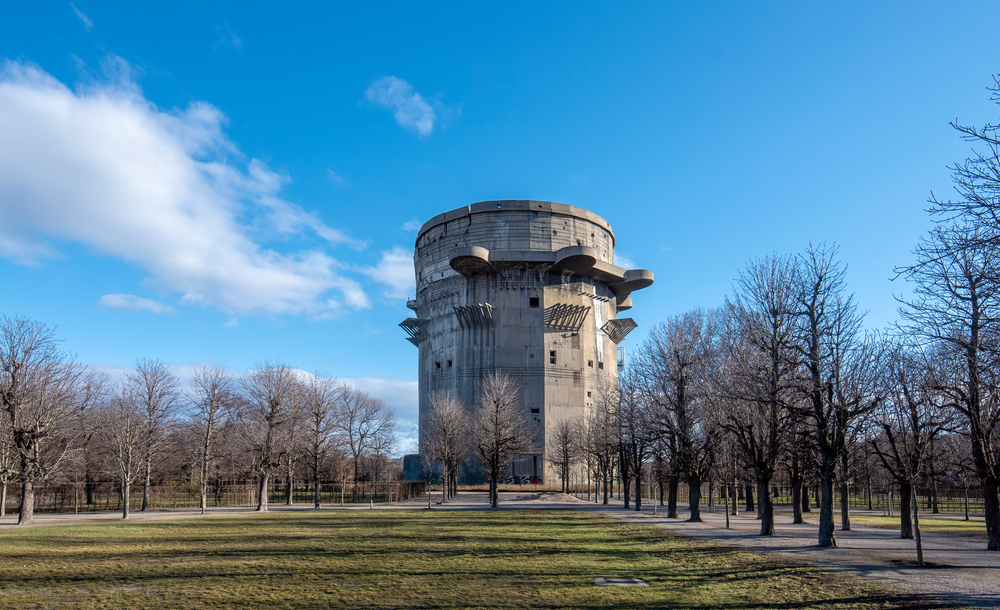
Flak towers were first used during World War II, and this type of fortification featured massive above-ground towers topped with anti-aircraft blockhouses. After an air raid in Berlin in 1940, Hitler ordered the construction of three massive towers to protect the capital city against further attacks.
The towers were built with 11-foot-thick walls and were able to sustain gunfire and bombings. Flak towers were so large that the largest of them could (and did) house around 30,000 civilians during air raids.
Throughout the war, eight of these flak towers were built around current-day Germany and Austria, and an additional seven towers were planned but never constructed.
13. Fire Support Base
A fire support base (also known as an FSB or firebase) is a temporary military installment that provides protection and support for artillerymen and infantry troops operating in an area. This is a relatively new type of fort, and the concept was used for the first time in the Vietnam War. FSBs are still being used today, with the most recent example being those in Afghanistan set up by US-led coalition forces.
The shape and scope of FSBs vary depending on the terrain they are found in, but the original concept featured six howitzers (a canon-like weapon with gun and mortar components) – one in the center to provide light during nighttime attacks and the remaining five situated in a star formation around the center.
FSBs first moved around every few days, but over time, many of these forts have become semi-permanent or permanent structures.
14. Gord
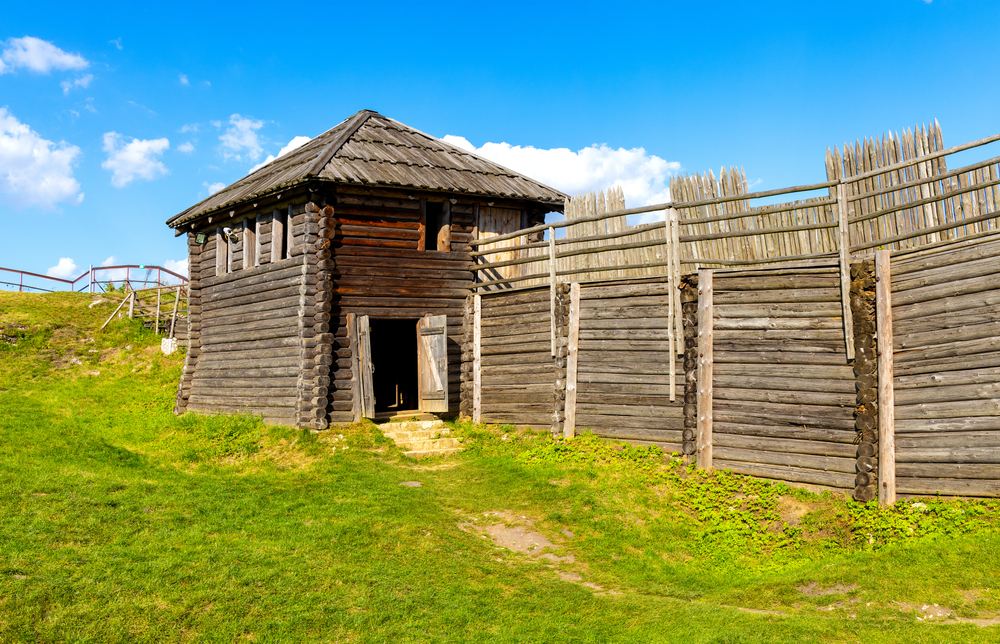
Another type of fort that is no longer in use today is the gord, also known as grads or burgwalls. These early Slavic settlements were fortified rings of palisades made of timber and earth on one side, usually faced a natural defense like a lake, river, or hillside on the other side.
The settlements that surrounded the forts were often densely populated, with servants, merchants, and artisans living in the communities outside of the walls and the higher-ranked individuals living inside the gords themselves. Gords were also used as military defenses along borders and trade routes, and some even evolved into castles and citadels over time.
Due to the materials used to construct these ancient structures, few have lasted throughout the years, though there are still some archeological sites with replicas of what a gord would have looked like.
15. Gusuku

What started off as basic stone walls around farming communities eventually transformed into one of the most interesting types of forts in the world. Gusuku are stone fortresses on the Ryukyu Islands of current-day Japan.
Many gusuku have been listed as UNESCO World Heritage Sites, though the origin and essence of these impressive structures are still somewhat of a mystery. Some believe that gusuku are ancient holy sites, due to their isolated locations and apparent lack of water supply. Others believe that there are different kinds of gusuku: one type being a residence for political leaders, another type for defending the communities in which they were located, and the third type for ancestral worship and burial.
It is important to note that not all gusuku were fortified, just about a dozen out of the hundred or so that have been discovered.
16. Korean Fortress

Korea is often referred to as a country of fortresses, and over 2,000 fort sites have been found throughout the peninsula. There are a few different types of Korean forts, but the most common is the mountain fortresses (or sanseong).
The oldest of these fortresses date back to the Three Kingdoms of Korea period, around 57–668 BC. Unlike some of the other forts from this time period, Korean fortresses were quite an impressive feat. Built out of stone rather than compacted earth, these majestic structures were usually found on natural mountainsides.
This type of fort was created by the Goguryeo Kingdom in the northern parts of Korea, though they eventually expanded into the rest of the Korean peninsula and other parts of the world. Korean-style fortress ruins have even been found in present-day Mongolia, Japan, and China.
17. Hill Fort
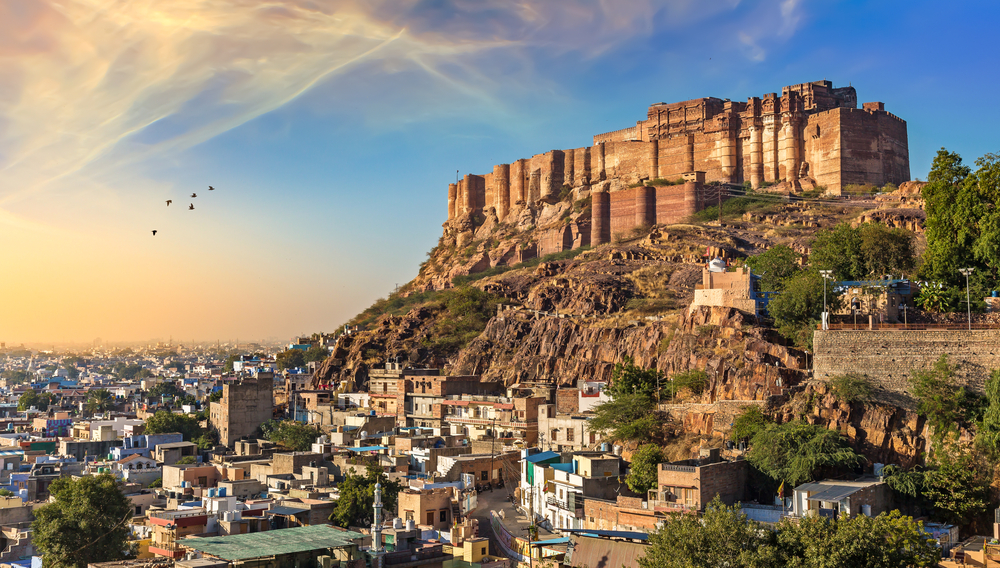
A hill fort is a type of fortification that uses the natural landscape as part of its defense. This type of fort is located high up on hills, mountains, sea cliffs, or other elevated landscapes to give those inside an advantage against attacking enemies or other unwanted visitors.
Hill forts date back to the Bronze Age and were especially popular in current-day New Zealand, Ethiopia, and all across Europe. During this time period and into the Iron Age, populations were growing, and while most settlements were fairly small (with about 50 inhabitants at the max), hill forts could accommodate and protect thousands of people.
The structure, size, and features of hill forts varied vastly by region, but some of the most common attributes included are defensive walls, ramparts and ditches, guardhouses, and defended entrances.
Hill forts also served different purposes throughout history, and while some were used for settlement, others were used as defensive strongholds, economic and administrative centers, and trading outposts.
18. Promontory Fort

Similar to the hill fort, a promontory fort is a defensive structure that was built above a steep cliff. These precariously placed forts reduced the necessity of ramparts and other defensive structures, and most could only be accessed via a narrow piece of land that connected the fort to the mainland.
While the time frame regarding when promontory forts were built is somewhat of a mystery, most experts believe they were most prominent during the Iron Age. Remnants of these ancient forts have been found mostly around the United Kingdom, especially on the Isle of Man, in Devon and Cornwall counties, Ireland, and even a few in current-day France.
19. Desert Fort
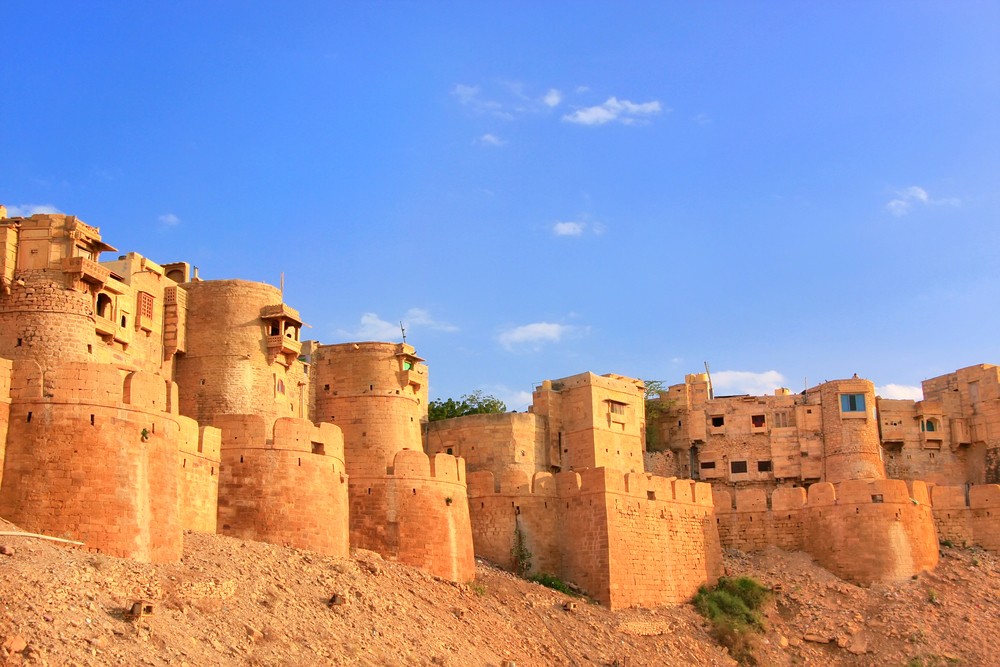
Another type of fort that uses the natural landscape as a defense mechanism is the desert fort. As the name suggests, this type of fort is built in a desert or other arid landscapes so as to inhibit the swift movement of enemies.
One of the most famous examples of this type of fort is the Jaisalmer Fort in Rajasthan, India. The fort was built by King Rawal Jaisal in 1156, and legend has it that a wise hermit suggested the location.
Aside from India, most desert forts can be found in northern Africa, specifically in current-day Jordan, Syria, Israel and Palestine, and Lebanon.
20. Water Fort
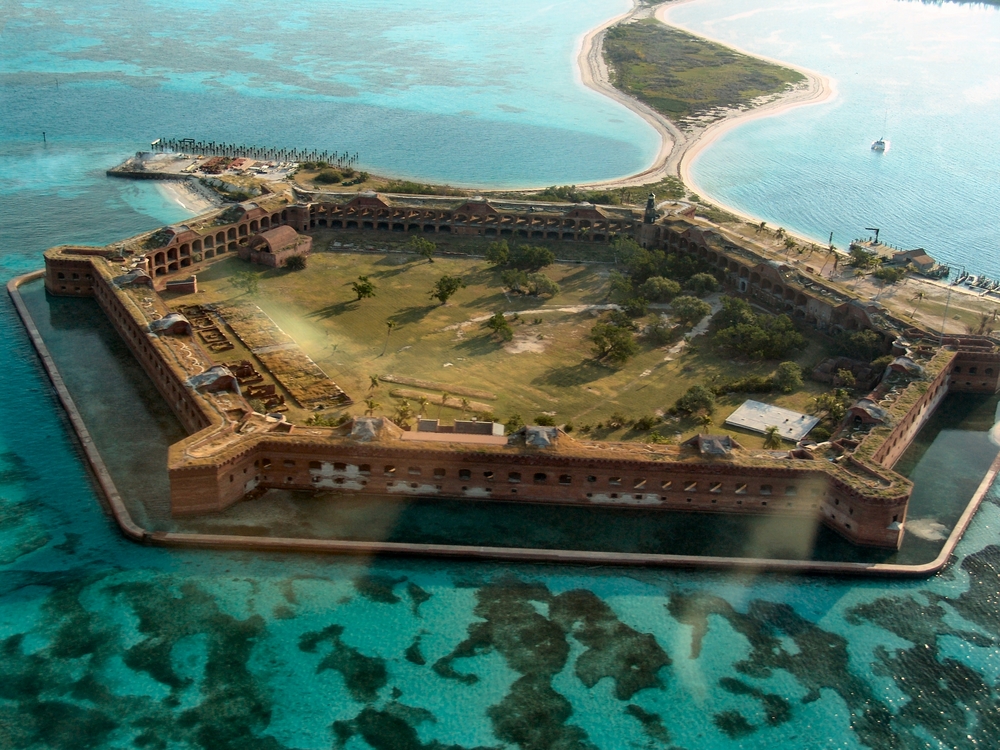
On the opposite end of the spectrum, water forts are a type of fortification that is surrounded entirely by water. The water surrounding this type of fort can be natural or artificial, or a combination of the two. Natural water forts are often surrounded by seas or rivers, while artificial water forts utilize man-made structures like moats or artificial lakes.
During World War II, fortified towers were built in the Thames and Mersey Rivers to help defend the United Kingdom against Nazi invasions. Water forts were especially popular in India, specifically in the Maharashtra region. Some water forts like the 13th-century Vijaydurg fort along India’s Konkan coast are now little more than ruins, while other more recently built structures like Fort Jefferson in the Florida Keys have been extremely well preserved.
21. Forest Fort
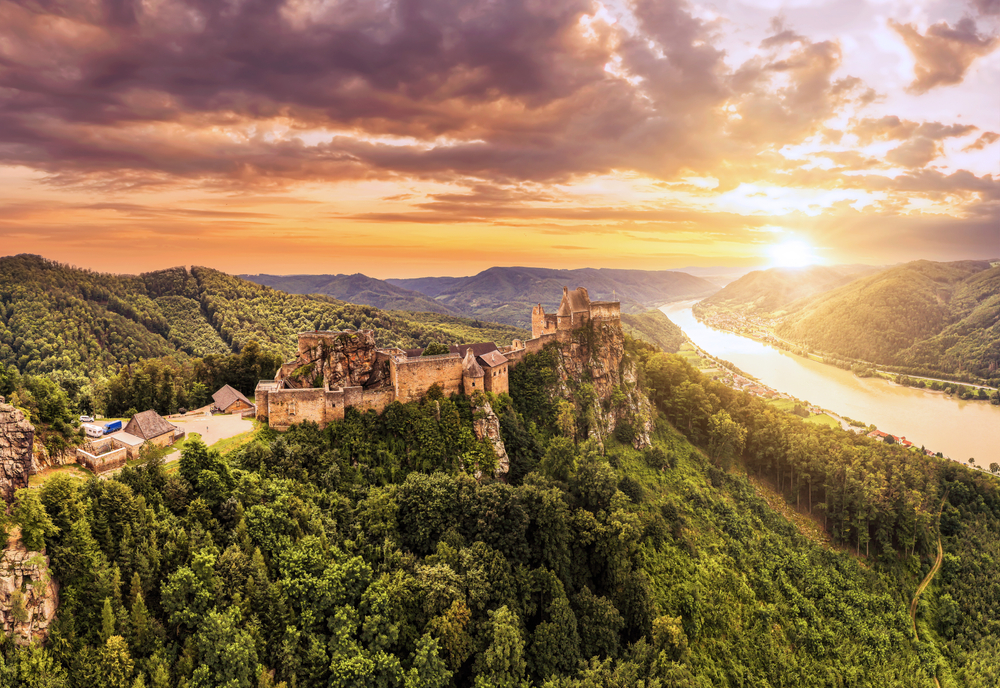
Forest forts also use their natural surroundings as a defense mechanism, and fortifications located in thickly forested areas used the natural coverage as their main line of defense. This type of fort often combined natural foliage with a hilltop location to strengthen defenses even further, though not all forest forts were located on inclines.
Many forest forts were constructed in already existing forests, like the baroque fortifications in the Black Forest and the Kalinjar Fort in Uttar Pradesh. In 10th and 11th-century China, Emperor Taizu ordered the planting of numerous trees along the Waqiao Pass region so as to allow only one mounted soldier at a time to pass through the area. Trees were also planted in intricate formations to create blockages and obstructions for anyone passing through.
22. Land Battery
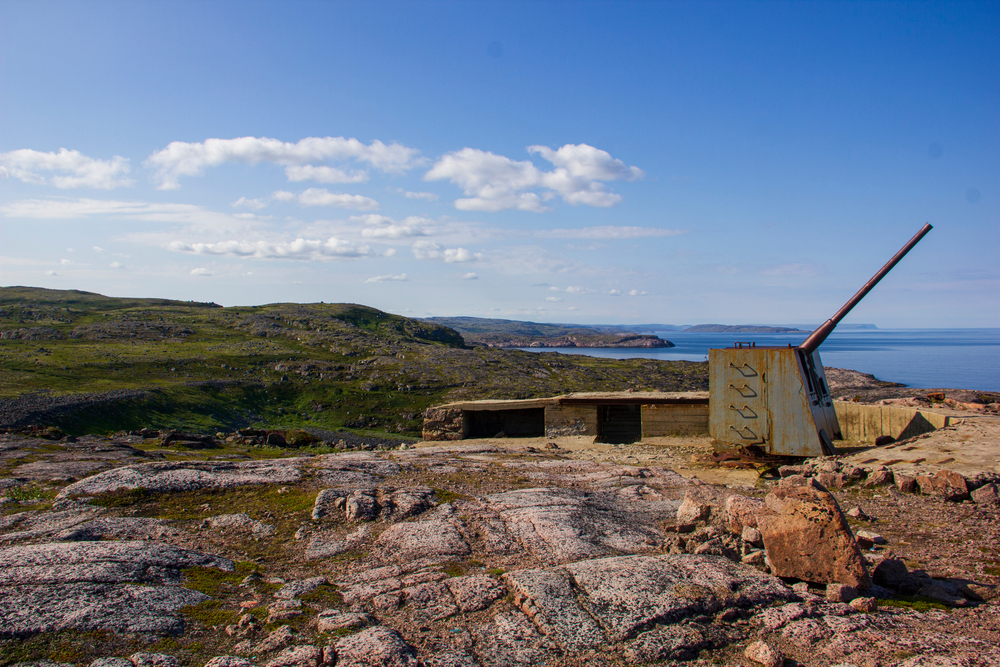
A land battery is a type of naval fortification used in coastal defense. This type of fort uses a special type of gun placed strategically to ward off attacks from ships, U-boats, and submarines.
Land batteries are also referred to as coastal artillery batteries and are usually placed near rivers, harbors, and anchorages. While the main purpose of land batteries is to protect against attack, they can also be used to restrict access in straits, channels, and coastal inland waterways.
Unlike some of the other types of forts on our list, land batteries are only used during times of war. Modern land batteries were first seen in World War I, but have since been used in the second world war and the Vietnam War. There are also some batteries located on the coasts of North Korea and in Iraq and Iran.
23. Martello Towers
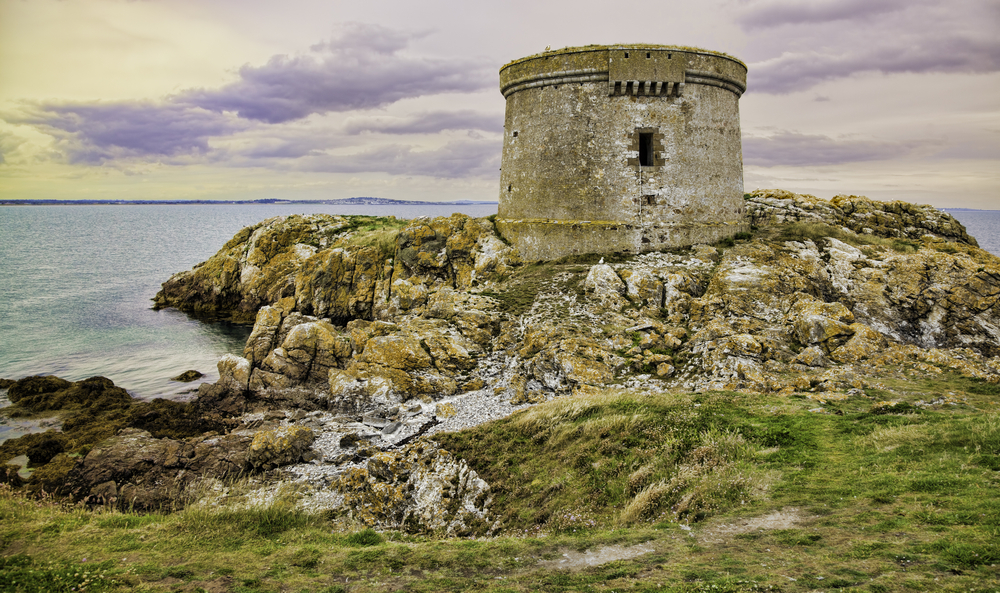
Created by the British Empire in the early 19th century, Martello towers are round structures with thick walls that typically held a garrison of 15–20 soldiers. Often referred to simply as Martellos, this type of fort was mostly located along coastlines and was made of solid masonry so as to make them resistant to cannon fire and other types of ammunition.
Their round shape and flat roof allowed for 360-degree defense, and these towers usually stood around 40 feet high and had two levels. Martello towers were first used in the French Revolutionary War and were a very popular type of fort until the late 19th century when a new type of circular fort became preferable.
During the time when Martello towers were popular, the United Kingdom controlled much of the world. For this reason, Martellos can be found in many different countries, including Australia, Canada, Jamaica, South Africa, Sri Lanka, and many others.
24. Peel Towers
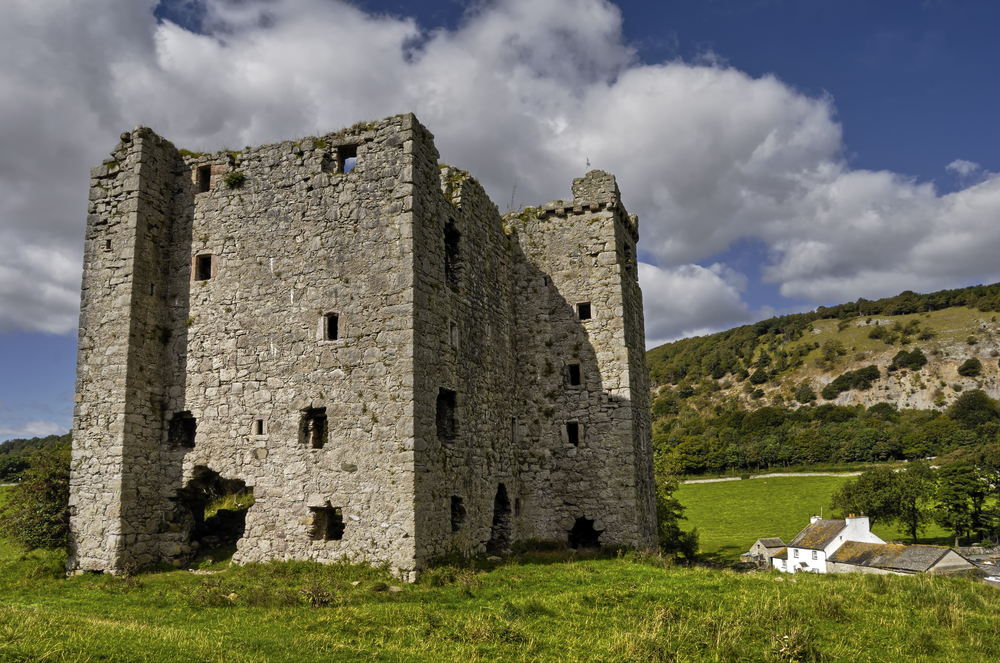
Common on the English and Scottish borders between the mid-14th century and early 17th century, peel towers were free-standing tower houses or fortified keeps whose main purpose was defense. These small edifices were usually made out of stone, though their design depended on the status of those who resided there.
There were often livestock pens situated outside of peel towers, and cattle raiding was oftentimes the main reason for having a defense system in place. It was also common for peel towers to be equipped with iron baskets at the top so that a fire could be lit as a warning sign of invasion to those residing nearby.
25. Redoubt
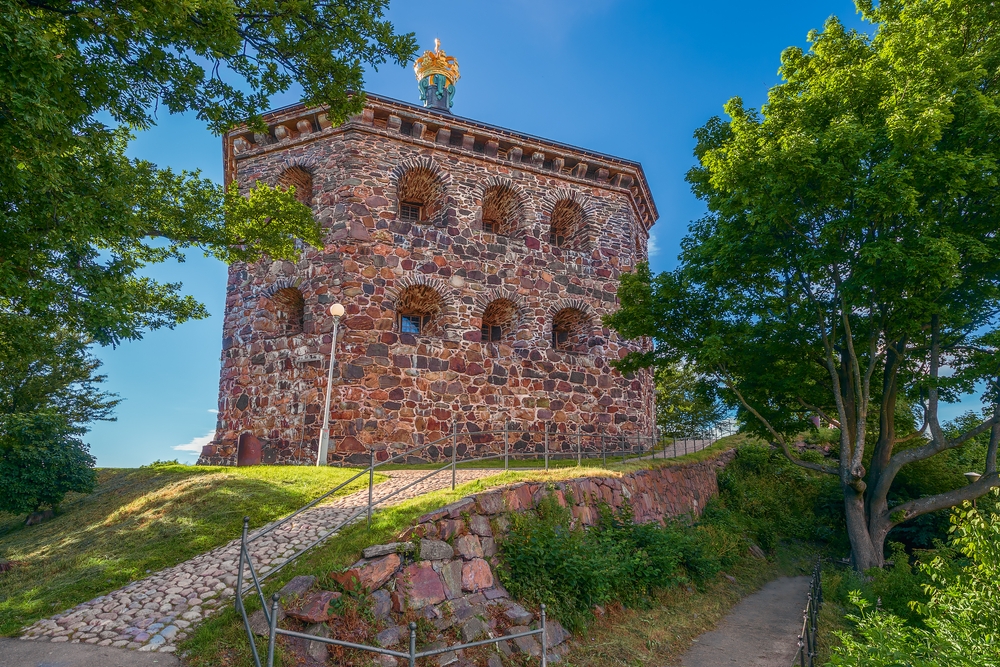
Translating into “a place of retreat”, redoubts were small defensive structures that were typically placed outside of a larger fort as a way to protect soldiers outside the main defensive line. Redoubts ranged in size and shape depending on where and when they were built, and some were permanent while others were assembled quickly before a battle.
During the English Civil War, many redoubts were built, mostly in an attempt to protect older forts from new-age weapons. Redoubts were also popular in Malta and New York, though very few types of this structure managed to survive the perils of war and time.
26. Star Fort
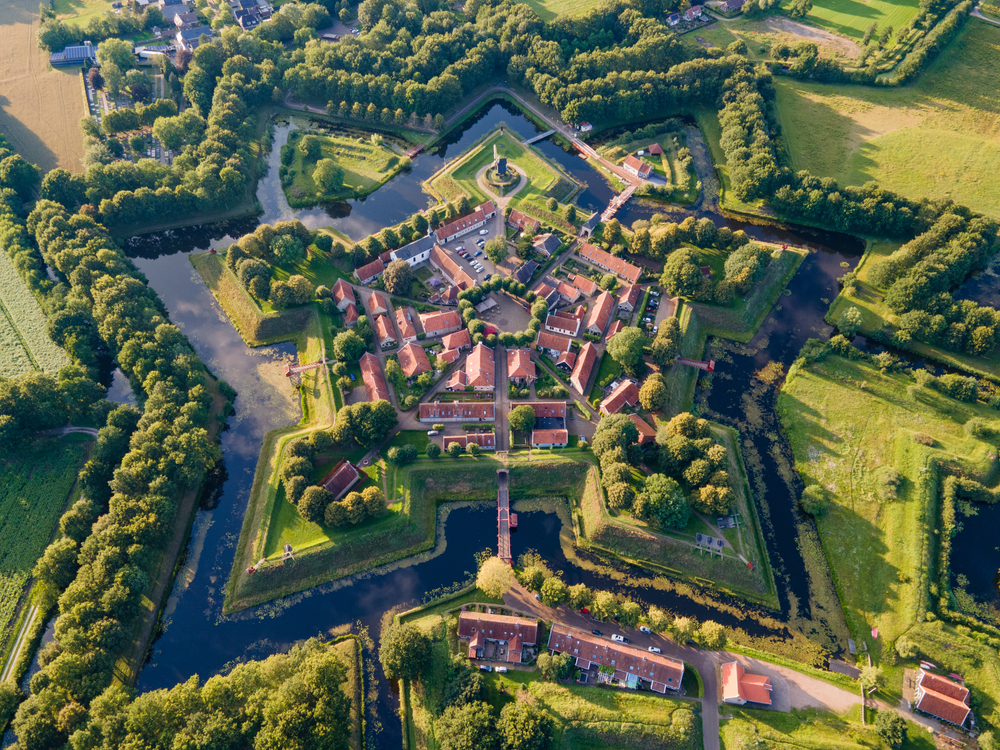
Star forts, often referred to as bastian forts, are a type of fortification that came about around the same time that cannons and gunfire began to dominate the battlefield. Before the 15th century, round forts were generally preferred, but these proved to be very vulnerable with the emergence of canons. Star forts were popular along the Italian peninsula and were created in response to French troops destroying traditional fortifications built in the Middle Ages.
The star fort design was relatively flat, with triangular bastions and a series of dry ditches and slopes to protect defenders against direct fire. Some star forts even had moats, ravelins, hornworks, and other intricate systems to create a complex structure that was difficult to invade.
27. Polygonal Fort

Polygonal forts came about in the late 18th century in France and were later completely developed in Germany by the early 19th century. Unlike earlier styles, these forts did away with the vulnerable bastions – a segment of the fort that protruded outward – which had proved to be a problem again and again throughout various wars.
These improved fortifications were usually placed in a ring formation so that each fort could protect its neighbors. As weapons and war tactics evolved, so did polygonal forts, and they were still being built and used throughout the 20th century up until the end of the second world war.
28. Trading Fort
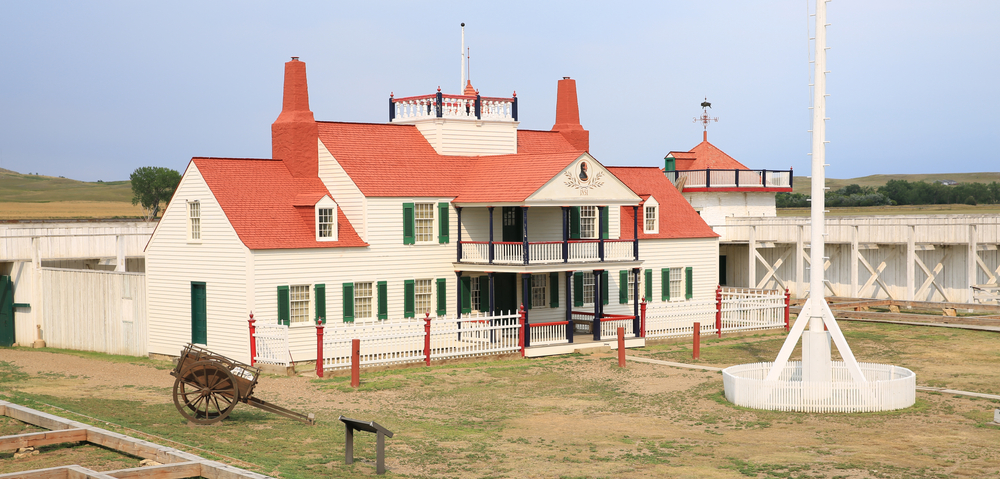
At the height of the North American Fur Trade, some of the most important types of forts were trading forts. As the Americas continued to be colonized, more and more settlers made their way across the big blue pond to put down new roots. Much of the land was still wild, however, and people could not get everything they needed.
For this reason, trading posts, stations, and houses were set up so that merchants and civilians from France, England, Germany, and the Dutch Republic could trade goods with the local Indigenous tribes. This type of fort was not usually used for military purposes, though many were fortified to protect against thieves.
Inside the walls of a trading fort, you could find everything from furs and food goods to jewelry, woven rugs, and other necessities for life on the frontier. Most of these structures were made from wood, and although none have survived the test of time, there are many recreations to showcase what these forts would have looked like.
29. Citadel

A citadel is essentially a fort inside of a fort, and these small “cities” often encapsulated the most important areas of a protected settlement or fortification. Citadels were considered the last line of defense in an attack and were usually the strongest part of the fort.
Historically, citadels have been used to protect inhabitants of nearby settlements, political powers, and garrisons, but more recently they have been used to enclose military command and control centers rather than cities and citizens.
Very few citadels are still in use to this day, but the ones that are still in operation are solely for military use. The Citadelle of Quebec is the largest citadel still in use in North America, and construction for this stately structure began in 1673 and was completed in 1820.
30. Missile Launch Facility

One of the most advanced types of forts is the missile launch facility. As the name suggests, these structures are used to launch missiles, but they are also used to store them. Also known as underground missile silos, launch facilities, and nuclear silos, missile launch facilities are vertical, cylinder-shaped structures that are placed underground with a large “blast door” protecting the top of the structure.
There are various different types of missiles, and for this reason, there are different ways of storing and launching them. During the Cold War, many different missile launch facilities were constructed around the world, but today few new facilities are being created. For obvious reasons, these types of fortifications are heavily guarded, and most missiles that are deployed are simply for tests rather than for war.














